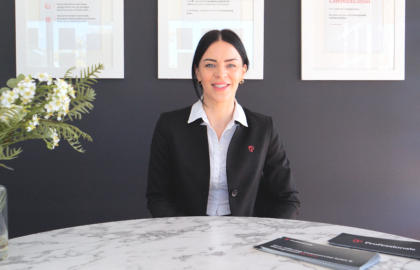
Who is responsible for mould in a rental property?
Mould can be a problem in any rental property for a number of reasons. But who is responsible for getting rid of mould, tenant or landlord?
Mould has a habit of forming in damp areas and places where there is little ventilation and it can be a problem in almost any property, even in sunny Australia.
Many tenants and landlords find themselves confused about who is responsible for mould and who needs to fix the problem. The answer to this question can actually go either way.
Take a look at what you need to know about mould in a rental property and whose problem it really is.
What is mould?
Wherever there is humidity and moisture, you have a good chance of finding mould. It is a type of fungus that grows in damp places, forming unsightly green or black blotches.
Mould generally grows in cupboards, bathrooms, basements and anywhere that is damp, poorly ventilated or lacking in natural light. It can even get into walls and carpets and cover shoes or handbags. Any porous surface in a damp area is a potential home for mould.
As well as being unpleasant to look at, mould needs to be dealt with because it can cause health problems. Many people, especially people with asthma and other respiratory problems, can have allergic reactions to mould and notice watery eyes, rashes, and breathing issues. Mould is especially unwanted in households with infants and small children whose lungs are yet to fully develop.
Who is responsible for getting rid of mould in a rental property?
When it comes to taking care of mould in a rental property in Australia, in general it comes down to where and how the mould has formed.
If mould has formed as a result of poor cleaning and lacklustre general maintenance, then it is usually the tenant’s responsibility to remove it.
If mould has come from structural issues like a leak in the ceiling, then it is the landlord’s job to take care of it and potentially cover any financial losses that have arisen because of it (e.g. loss of clothing).
Keeping mould at bay should be seen as a team effort. Tenants are required to keep the property clean and ventilated. Landlords are required to ensure that a home is clean to begin with and that there is adequate ventilation and heating to keep it at bay.
As a tenant, you can prevent mould from forming by airing out the house whenever you can and maintaining reasonable levels of cleanliness. Open doors and windows regularly, and wipe down the inside of cupboards. You may find you need to use a dehumidifier if you live in a particularly damp or humid area.
If regular cleaning and ventilation doesn’t stop mould then there is a chance it is a problem for the landlord. While legislation varies from state to state, it is a universal requirement for landlords to ensure that the property is in good shape and mould free before they make it available to tenants.
What to do if mould is a concern at your rental property
If you are having an issue with mould and you have a property manager, speak with them about what can be done. They will be able to refer to inspection and condition reports to determine where responsibility lies.
Your property manager will also be able to explain any regulations in your state that are related to mould so you have a clear idea of whether it is your responsibility to take care of it.
Tenants who have complained about mould and not had the problem addressed do have the opportunity to apply to their local tribunal for compensation and repairs. However, if there is a reliable property manager involved, they will be able to handle the issue without the need for additional intervention.







